Hi! Looking for advice to understand if I'm doing anything incorrectly. A little background...
We live in the Phoenix area and we have a pool that completed build in Aug. 2020. Over the course of the last 2+ years, I've done all of my own maintenance and kept the water chemistry in balance. I monitor our pool frequently and the water has always been prestine (with the exception of a major dust storm or three). We have a SWG and I never use shock products or tabs, only liquid chlorine if necessary (exception to tab usage is when our SWG died prematurely towards the end of summer and needed a quick stop gap for a few weeks until replacement). Due to the SWG, our pH rises constantly so it's always a battle to keep it in check but not surprising. Our fill water is no better since it usually comes out of the tap at about pH of 8. Since our fill water has high calcium content, our CH has also increased over the last two years and the last reading was about 1400 ppm. I know that's high but I mainly monitor to keep my CSI in check so I never suffer the scaling effects that so many people in Phoenix have issues with. All that to say that the pool water never has an issue going acidic... it is always high so I generally fight to keep calcium scaling and I'm never concerned with etching issues.
That being said, our builder had to drain our pool yesterday for a repair to fix a rusting rebar stain. Once I drained the pool, I immediately noticed that there is a general blusish-green cast over many parts of the pebble plaster surfaces. It was widespread and almost blotchy in some spots. You can't really see it much when the pool is filled because we have a very light/white color pebble and the blueish-green blends in with the water. The difference is very noticible in the repair patch since it's white compared to the surrounding pebble. The tech said that it's very likely the copper is being etched away from the heater core due to acidic conditions and depositing itself on the pebble. This is where I scratch my head in disbelief because I KNOW for a fact that my water never drops below pH 7. I'm constantly battling to control rising pH, not falling!
I'm out of ideas as to where the copper came or is coming from. Our town water quality reports that the copper in the water is 0.17 ppm so it can't be the fill water. Any ideas? I'm just worried that our heater core is somehow disintegrating for some reason.
Thanks in advance for your help!
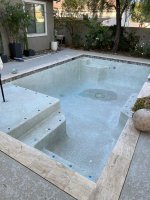
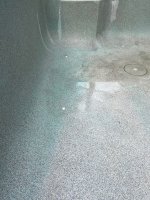
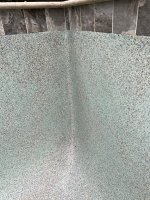
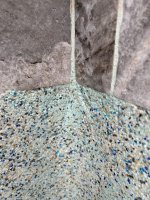
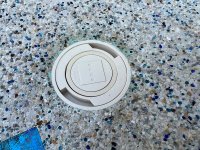
We live in the Phoenix area and we have a pool that completed build in Aug. 2020. Over the course of the last 2+ years, I've done all of my own maintenance and kept the water chemistry in balance. I monitor our pool frequently and the water has always been prestine (with the exception of a major dust storm or three). We have a SWG and I never use shock products or tabs, only liquid chlorine if necessary (exception to tab usage is when our SWG died prematurely towards the end of summer and needed a quick stop gap for a few weeks until replacement). Due to the SWG, our pH rises constantly so it's always a battle to keep it in check but not surprising. Our fill water is no better since it usually comes out of the tap at about pH of 8. Since our fill water has high calcium content, our CH has also increased over the last two years and the last reading was about 1400 ppm. I know that's high but I mainly monitor to keep my CSI in check so I never suffer the scaling effects that so many people in Phoenix have issues with. All that to say that the pool water never has an issue going acidic... it is always high so I generally fight to keep calcium scaling and I'm never concerned with etching issues.
That being said, our builder had to drain our pool yesterday for a repair to fix a rusting rebar stain. Once I drained the pool, I immediately noticed that there is a general blusish-green cast over many parts of the pebble plaster surfaces. It was widespread and almost blotchy in some spots. You can't really see it much when the pool is filled because we have a very light/white color pebble and the blueish-green blends in with the water. The difference is very noticible in the repair patch since it's white compared to the surrounding pebble. The tech said that it's very likely the copper is being etched away from the heater core due to acidic conditions and depositing itself on the pebble. This is where I scratch my head in disbelief because I KNOW for a fact that my water never drops below pH 7. I'm constantly battling to control rising pH, not falling!
I'm out of ideas as to where the copper came or is coming from. Our town water quality reports that the copper in the water is 0.17 ppm so it can't be the fill water. Any ideas? I'm just worried that our heater core is somehow disintegrating for some reason.
Thanks in advance for your help!






